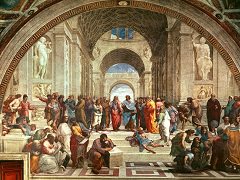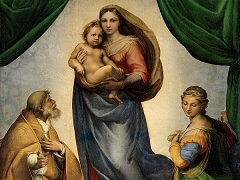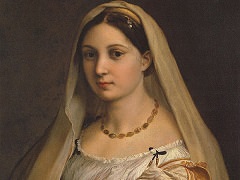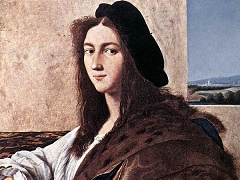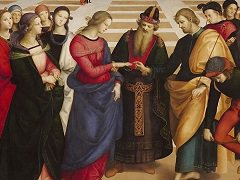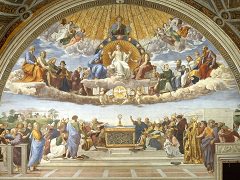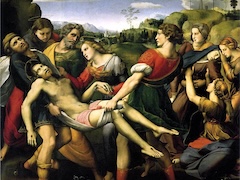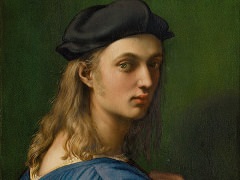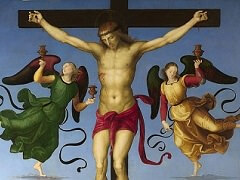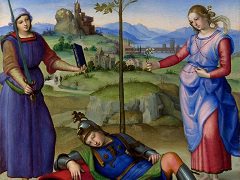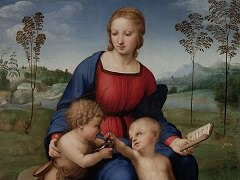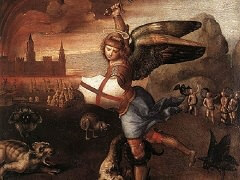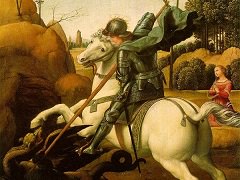The Triumph of Galatea - by Raphael
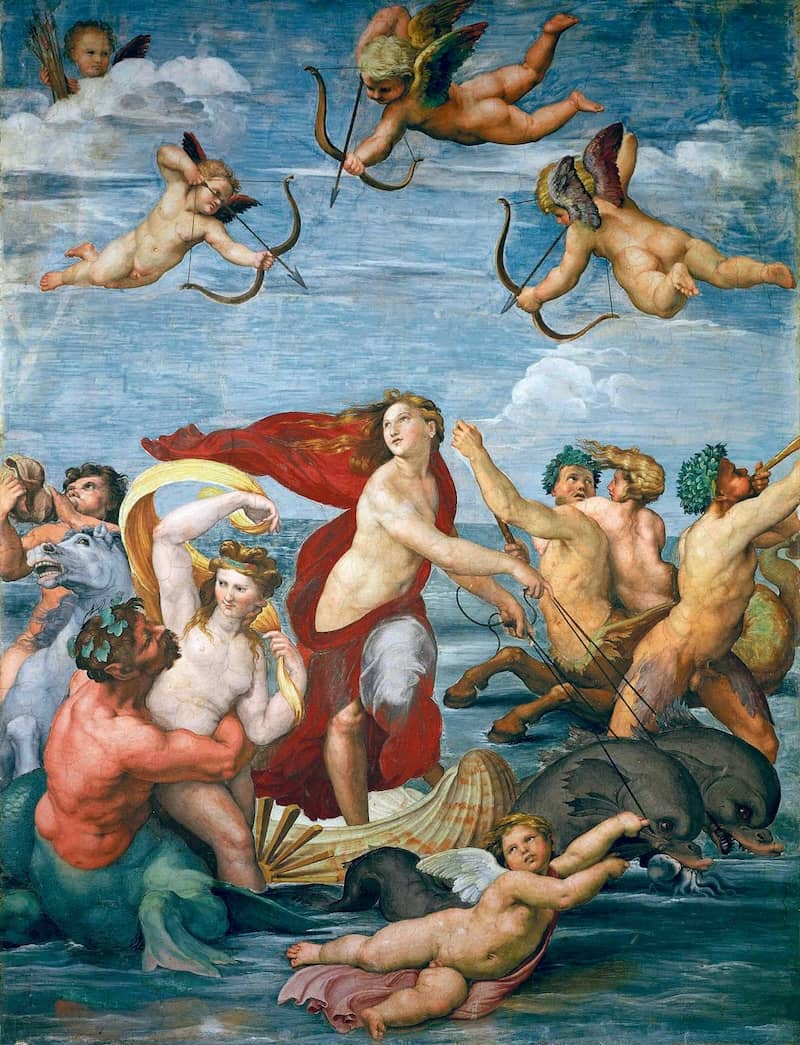
The Sienese banker and art patron Agostino Chigi, whose great wealth made him one of the most powerful men of his age, built his Roman villa in the Trastevere district. Its construction and decoration were conducted by the Sienese painter and architect Baldassare Peruzzi, who, in turn, brought in other painters, including Sodoma and Sebastiano del Piombo, to execute parts of the fresco decorations. The ground-floor grand salon of the house has an ingenious and highly intricate ceiling fresco that treats Chigi's horoscope; the stars were painted in the guise of personifications arranged in the sky at the moment of his birth. On the walls were planned a series of frescoes dealing with the gods of the earth and of the sea. Only two were ever executed: Sebastiano's Polyphemus and Raphael's The Triumph of Galatea. In contrast to its counterpart next to it, Raphael's fresco offers continual turmoil and swift movement, as the graceful The Triumph of Galatea streaks across the sea in a shell propelled by dolphins.
As subject Raphael chose a verse from a poem by the Florentine Angelo Poliziano which had also helped to inspire the Birth of Venus by Sandro Botticelli. These lines describe how the clumsy giant Polyphemus sings a love song to the fair sea-nymph The Triumph of Galatea and how she rides across the waves in a chariot drawn by two dolphins, laughing at his uncouth song, while the gay company of other sea-gods and nymphs is milling round her.
Raphael's fresco shows The Triumph of Galatea with her gay companions; the giant is depicted in a fresco by Sebastiano del Piombo which stands to the left of Raphael's The Triumph of Galatea. However long one looks at this lovely and cheerful picture, one will always discover new beauties in its rich and intricate composition. Every figure seems to correspond to some other figure, every movement to answer a counter-movement.

